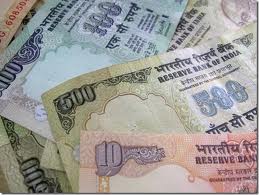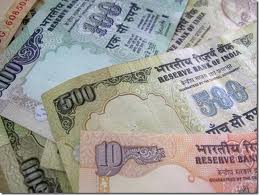
In the dynamic world of finance, currency futures play a crucial role in facilitating international trade and hedging against foreign exchange risks. In India, the clearing, settlement, and risk management of currency futures are governed by well-defined regulations and procedures. This article aims to provide a comprehensive understanding of the processes involved in clearing, settlement, and risk management of currency futures in India.
1. Introduction
Currency futures are financial contracts that allow market participants to buy or sell a specified amount of one currency in exchange for another currency at a predetermined future date and price. They provide a mechanism for managing foreign exchange rate risks and are widely used by businesses engaged in international trade.
2. Currency Futures: An Overview
Currency futures in India are traded on recognized stock exchanges such as the National Stock Exchange (NSE) and the Bombay Stock Exchange (BSE). The futures contracts are standardized in terms of contract size, maturity date, and underlying currency pairs. The most actively traded currency futures in India include USD/INR, EUR/INR, GBP/INR, and JPY/INR.
3. Clearing of Currency Futures
Role of Clearing Corporation
The clearing process is a crucial component of currency futures trading. It involves the determination of obligations between buyers and sellers and ensures the smooth settlement of trades. In India, the clearing function is performed by a recognized clearing corporation, such as the Indian Clearing Corporation Limited (ICCL) for NSE currency futures.
Margin Requirements
To mitigate counterparty risks, currency futures traders are required to deposit margins with the clearing corporation. These margins serve as a financial cushion to cover potential losses. The margins can be in the form of initial margin, exposure margin, and mark-to-market margin.
Marking to Market
Marking to market is the process of valuing open positions in currency futures contracts at the end of each trading day. The gains or losses on these positions are settled daily by adjusting the margin accounts of market participants. This mechanism ensures that market participants are aware of their financial obligations on a daily basis.
4. Settlement of Currency Futures
Daily Settlement
At the end of each trading day, currency futures contracts are settled through the process of daily settlement. The settlement price is determined based on the closing price of the futures contract. Profit or loss arising from the daily settlement is credited or debited to the respective trader’s account.
Final Settlement
The final settlement of currency futures contracts takes place on the expiration date of the contract. The settlement price for the final settlement is computed based on a reference rate announced by a recognized body, such as the Reserve Bank of India (RBI). Upon final settlement, the obligations of the contract are settled in cash.
5. Risk Management in Currency Futures
Position Limits
To maintain market integrity and prevent excessive speculation, position limits are imposed on currency futures contracts. These limits specify the maximum number of contracts that a market participant can hold at any given time. Position limits help in reducing the concentration of risk and ensure a fair and orderly market.
Price Limits
Price limits are implemented to prevent extreme price movements in currency futures contracts. These limits impose restrictions on the maximum price change allowed during a trading session. By limiting price volatility, price limits provide stability and safeguard market participants from sudden and unfavorable price swings.
Risk Mitigation Measures
In addition to position limits and price limits, risk mitigation measures such as stress testing, scenario analysis, and periodic reviews are undertaken by regulatory authorities. These measures aim to assess the potential risks associated with currency futures trading and develop appropriate risk management strategies.
6. Market Participants and their Roles
The currency futures market in India comprises various participants, including individuals, corporations, banks, and institutional investors. Each participant plays a unique role in the market, such as hedging currency risks, speculating on exchange rate movements, or providing liquidity to the market.
7. Regulatory Framework
The clearing, settlement, and risk management of currency futures in India are governed by regulatory bodies such as the Securities and Exchange Board of India (SEBI) and the Reserve Bank of India (RBI). These regulatory authorities ensure compliance with rules, promote market transparency, and safeguard the interests of investors.
8. Conclusion
Clearing, settlement, and risk management are integral aspects of currency futures trading in India. The well-defined processes and regulatory framework provide a robust foundation for efficient and secure trading. By understanding these processes and adhering to the prescribed guidelines, market participants can effectively manage risks and capitalize on opportunities in the currency futures market.
FAQs
1. What are currency futures?
Currency futures are financial contracts that allow market participants to buy or sell a specified amount of one currency in exchange for another currency at a predetermined future date and price.
2. How are currency futures cleared in India?
Currency futures in India are cleared through recognized clearing corporations such as the Indian Clearing Corporation Limited (ICCL) for NSE currency futures.
3. What is the role of marking to market in currency futures?
Marking to market is the process of valuing open positions in currency futures contracts at the end of each trading day. It ensures that market participants are aware of their financial obligations on a daily basis.
4. How are currency futures settled in India?
Currency futures contracts in India are settled through daily settlement and final settlement. Daily settlement takes place at the end of each trading day, while final settlement occurs on the expiration date of the contract.
5. What risk management measures are implemented in currency futures trading?
Risk management measures in currency futures trading include position limits, price limits, stress testing, scenario analysis, and periodic reviews. These measures aim to mitigate risks and ensure market stability.
NSE (NationaStock Exchange of India) has witnessed healthy growth in the turnover and open interest positions during its first completed month of currency futures trading in India. NSE commenced currency futures trading in India on 29th August.
CDX (Currency Derivative Exchange), currency derivative segment of BSE (Bombay Stock Exchange) commenced currency futures trading from 1st October. BSE on its very first day of trading in currency futures clocked a turn over of about 65,000 contracts, which is approximately Rs. 300 Crores.
With ever-growing globafinanciacrisis, exchange rates are fluctuating widely. INR exchange rate has touched 47 against USD. Currency futures trading in India has generated huge interest among Indian retaiinvestors and traders. There is a strong demand for information gathering about the intricacies of currency futures from smalinvestors and enterprises.
This article intends to provide detailed information about clearing, settlement and risk management process of currency futures on NationaStock Exchange of India.
Who carries out the process of clearing and settlement?
NSCC(NationaSecurities Clearing Corporation Limited), a wholly owned subsidiary of NSE acts as the body responsible for carrying out the entire clearing and settlement process. NSCCL, established in August 1995, is the first clearing corporation in India.
What are the primary functions of NSCCL?
- To operate tight risk containment system
- To carry out the Novation (It is a process of replacement of one obligation by another by mutuaagreement of both the parties)
- To act as the counter party to althe trades
- To guarantee the finasettlement
What is the modeof clearing and settlement process?
- Clearing members and clearing banks are the entities that help NSCCin carrying out the activities of clearing and settlement. There are two types of clearing members.
- Trading cum clearing members (TCM) – TCM clear and settle, their own trades as welas the trades of other trading members (TM)
- Professionaclearing members (PCM) – PCM clear the trades executed by trading members
- TCM and PCM have to pay deposit to undertake clearing and settlement of trades of every TM.
- TCM and PCM have to open a separate bank account with NSCCdesignated bank for settlement of trades.
- The entire process of clearing and mechanism comprises of three components – clearing, settlement and risk management
How the clearing mechanism takes place?
- NSCCworks out open positions and obligations of clearing members (TCM and PCM) at the end of every business day.
- Daily exposure limits and margin obligations are derived based on net open positions. Net open contracts (Buy – Sell) multiplied by 1000 gives the net open positions in USD terms.
NOTE: The information about the process of calculation of net open position across various members is not covered in this article. Any reader who is interested in knowing this process should post the request in the comments section.
How the settlement mechanism takes place?
- Settlement is done in cash mode payable in INR.
- Daily MTM (Marking to Market) settlement takes place based on DSP (Daily settlement price) which is calculated by taking the weighted average of last half an hour’s trades.
- NSE daily disseminates DSP on its website.
- Daily MTM or profit and loss are calculated by taking the difference of trade price and DSP. If a client has carried forward the position from previous day then MTM is calculated as the difference between previous day’s DSP and current day’s DSP.
- Clearing members with net loss in daily MTM have to pay the amount in cash. Clearing members with net profit wilreceive the amount in cash. Payment and receipts are to be settled on the basis of T+1 day.
- Clearing members are responsible for collection/payment of daily MTM from/to the trading members, who in turn are responsible for the client’s liabilities.
- At the end of the day althe net positions are carried forward to next day after resetting with respect to the current day’s DSP.
- Finasettlement is also done in cash mode in terms of INR.
- Finasettlement price is the RBI reference rate on the last trading day of the expiry contract.
- Finaprofit and loss or MTM of althe net open positions of the clearing members wilbe on the basis of finasettlement price. Settlement takes place on the basis of T+2 days.
How the risk management is carried out?
Salient features of risk management system of NSCCL:
- Financiasoundness of the members is ensured by imposing stringent conditions about capitaadequacy. NSCCenforces the requirement about sufficient net-worth and cash and collaterasecurity deposit.
- NSCCfollows real-time and scientific margining system.
- Net open positions of the members are daily settled in cash based on MTM.
- Members open positions are monitored online and alerts are issued on reatime basis in respect of violation of margin and open positions. Whenever any trading member exceeds intra-day limits or violates the margins and open positions then further trading of that member is stopped for the rest of the day and untithe compliances are fulfilled.
- NSCCmaintains separate settlement guarantee fund, which is created out of the capitaof the members.
Margining System
Trading in currency future and for that matter any derivatives involves highly leveraged trading. Any leveraged trading is capable of generating enormous losses even with minor movement in the price of underlying. Smooth functioning of the market demands perfect margining system.
Most criticacomponent of a healthy margining system requires online monitoring. Margining system of NSCCmonitors online positions on intra-day basis by using PRISM (ParalleRisk Management System). In PRISM, risk of each member is monitored online on reatime basis. As and when any member approaches certain limits, alerts are generated and sent online to the members. In case a member exceeds the set limits then further trading of the member is stopped automatically. NSCCcalculates initiamargin on portfolio based margining system by using SPAN (Standard Portfolio Analysis of Risk)
NSCC– SPAN
Main objective of SPAN is to identify the overalrisk in the entire portfolio of each member. Main emphasis is on calculating the maximum loss that a portfolio might be expected to suffer from the current day to the next day on the base of 99% VaR (Value at Risk) methodology. SPAN system constructs the probable scenarios in the changes in the price of the underlying presuming various levels of volatility.
Types of Margins
- InitiaMargin – NSCCcomputes initiamargin up to client leveon the base of SPAN methodology. Client has to pay the initiamargin upfront.
- Extreme Loss Margin – 1% of value of gross open positions of any member is adjusted online and on real-time basis from the liquid assets of the member towards extreme loss margin.
- Client Margins – NSCCdaily communicates to the members about the margin liability of each and every client. Members are responsible for pay-in and pay-out of the margins to clients. Members are also required to submit compliance report to NSCCL





